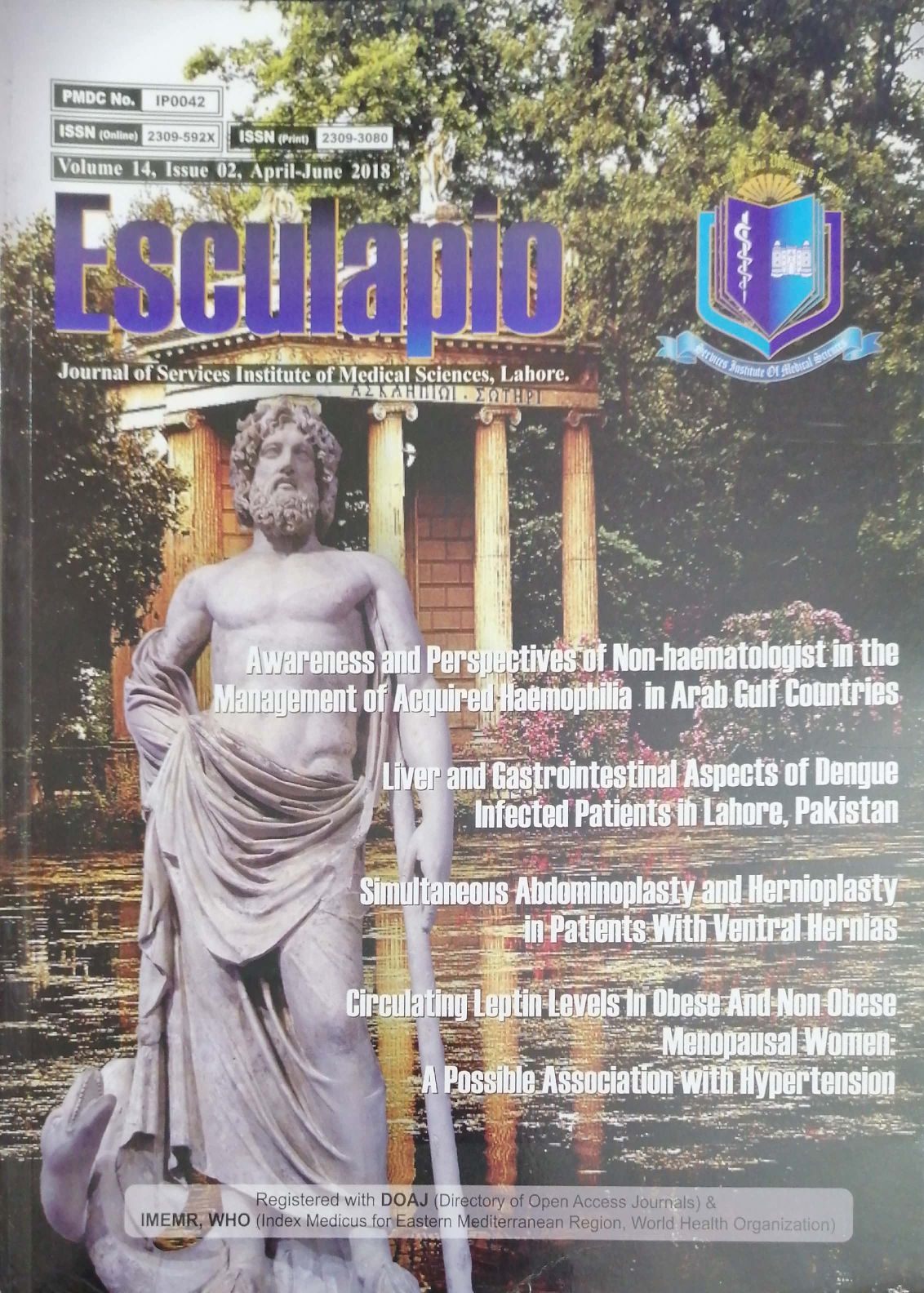Liver and Gastrointestinal aspects of Dengue infected Patients, in Lahore, Pakistan
DOI:
https://doi.org/10.51273/esc18.71426Keywords:
dengue, outbreak, liver and GI aspects, bivariate analysis, odds ratioAbstract
Objective: To evaluate the liver and gastrointestinal (GI) aspects of Dengue infected patients
during 2011 outbreak in Lahore, Pakistan.
Methods: In a prospective analysis of 301 Dengue infected patients, gender, sleep pattern,
family history of Dengue disease, history of co-morbid disease, history of NSAIDs intake,
gallbladder edema, ascites, pleural effusion, hepatomegaly, splenomegaly, hypoalbuminemia,
type of Dengue disease, Leucopenia during hospitalization, Leukocytosis, grade of
thrombocytopenia, hyperbilirubinemia, elevated Alanine Aminotransferase (ALT), prolonged
International Normalized Ratio (INR), episode of upper GI bleed were the qualitative variables.
Age, weight, minimum white blood cells count (WBC), maximum WBC, minimum platelets count,
Maximum Bilirubin, maximum ALT and maximum INR during hospitalization were quantitative
variables. The statistical relation of multiple predictive factors with upper GI bleed as well as liver
parameters with outcome were checked in Dengue infected patients using SPSS version 15.
Results: Out of the total of 301 patients, 71.4% were male and 28.6% female. 43.2% were
defined as Dengue fever (DF), 49.2% as Dengue hemorrhagic fever (DHF), 4.3% as Dengue
shock syndrome (DSS) and remaining 3.3% as unusual Dengue syndrome (UDS). During
hospitalization, thrombocytopenia, leucopenia, leukocytosis, hypoalbuminemia,
hyperbilirubinemia, elevated ALT and prolonged INR were observed in 100%, 50.1%, 15.6%,
49.8%, 13.9%, 92.3% and 4.3% patients respectively. Ultrasonographic findings were
gallbladder (GB) edema, ascites, pleural effusion, hepatomegaly and splenomegaly. 18.9%
patients suffered upper GI bleed and main endoscopic finding was erosive gastritis with punctate
hemorrhages. H/O NSAIDs intake (p=0.000), hypoalbuminemia (p=0.001), absence of
leucopenia (0.000), leukocytosis (0.000), hyperbilirubinemia (0.002) and prolonged INR (0.004)
were the predictors for upper GI bleed, while hyperbilirubinemia (p=0.000) and prolonged INR
(p=0.000) were predictive for death in Dengue infected patients.
Conclusions: Dengue is a male predominant disease, where prohibition of NSAIDs intake is
necessary to avoid upper GI bleed. Abnormal liver parameters predict upper GI bleed as well as
mortality in Dengue infected patients.










